Godmother profile: Audrey Hepburn
Hepburn remains the ultimate Hollywood poster child. Stemming from an almost fatal childhood in German-occupied Holland and progressing to cinematic royalty despite all the odds, Hepburn also set the foundations for honest and compassionate humanitarian work. The cruise industry was lucky to have her
Her parents were Nazi sympathisers. She sang to JFK on his birthday. She summoned James Bond to fight against poverty, was fluent in English, Dutch, Spanish, French, and Italian, and remained an advocate for children’s rights. A breed of Tulip bears her name.
She aided the resistance during WWII, fronted UNICEF as a Goodwill Ambassador and volunteered in a Dutch hospital. The song ‘Moon River’ was written for her. She held a deep fondness for animals – including her Yorkshire Terrier known as ‘Mr Famous’ – and went to war with Walt Disney.
As far as achievements go, that’s rather spectacular. And yet, when you consider the lady’s day job, those fulfilments increase in magnitude. This was Audrey Hepburn – an Oscar-winning actress and cultural icon who warranted her fame both on and off the screen.
Unlike many of her kin, the Hollywood legend wasn’t only a heroine on film, but also a lionheart who brought virtuous equilibrium to those without a societal voice.
Hepburn set the groundwork as an intoxicating blend of charismatic film star, muse and humanitarian. Other big names have attempted to follow her blueprint, yet their insincerity and vanity have often curbed success.
Our lady Hepburn, on the other hand, was a true and compassionate philanthropist. More than My Fair Lady, she was everyone’s Monte Carlo Baby.

Robbed from us in 1993 aged only 63, the European-born Hollywood superstar captivated audiences and set the ethnic preliminaries for a graceful style that many emulate with modern values.
Often unfavourably compared against the dizzy sexpot that was Marilyn Monroe, Hepburn remains Hollywood’s greatest star - no contest. Offering a legacy that certifies a level of Saintly status usually reserved for biblical figures, Audrey rewrote the rule book. Betty Davis and Joan Crawford ain't got nothing on this gal.
Boasting such a positive impact on an ever-maddening world, brands clamoured over themselves to secure Hepburn as an ambassador. Gaining her image was akin to liaising with God.
Always a ground breaker, Audrey became the first actress to lay claim as a ship’s godmother. Striding across the platform in a nautically inspired outfit on March 23, 1989, having spearheaded the naming ceremony for the original Star Princess, Hepburn promptly stepped aboard for the cruise ship’s maiden voyage to the Caribbean.
Although she may have preferred a Roman Holiday, the maiden trip provided a rare opportunity to relax. I’ll get my coat…
Audrey Hepburn: parental trouble
Born on May 4, 1929, Audrey Kathleen Ruston was the daughter of Baroness Ella van Hemmstra and Honorary British Consul Joseph Victor Anthony Ruston.
Known to her family as Adriaantje, Hepburn’s childhood was a sheltered and privileged one – her multinational background (attesting to her unique accent) was enhanced by travel between nations due to her father’s employment.
Joseph abruptly left the family in 1935 following a ‘scene’ when Hepburn was only six years old, which dramatically affected her mentality. She later professed that her father’s departure was “the most traumatic event of my life” and would speak about the domino effect of a child being “dumped”. “Children need two parents”, she would later broadcast when working with UNICEF.
Up until that point, Hebpburn’s mother and father had collected donations and recruited on behalf of the British Union of Fascists (B.U.F). Baroness Ella had even met Adolf Hitler and written complimentary articles about the Nazi mantra. After leaving the family, Joseph became further involved with Fascist activity and rarely contacted his daughter, before her parents officially divorced in 1938.
Hepburn renewed contact with her father in the 1960s, after locating him in Dublin through the Red Cross, but he continued to remain emotionally detached. Regardless of that, Audrey financially supported her father until his death in 1980.
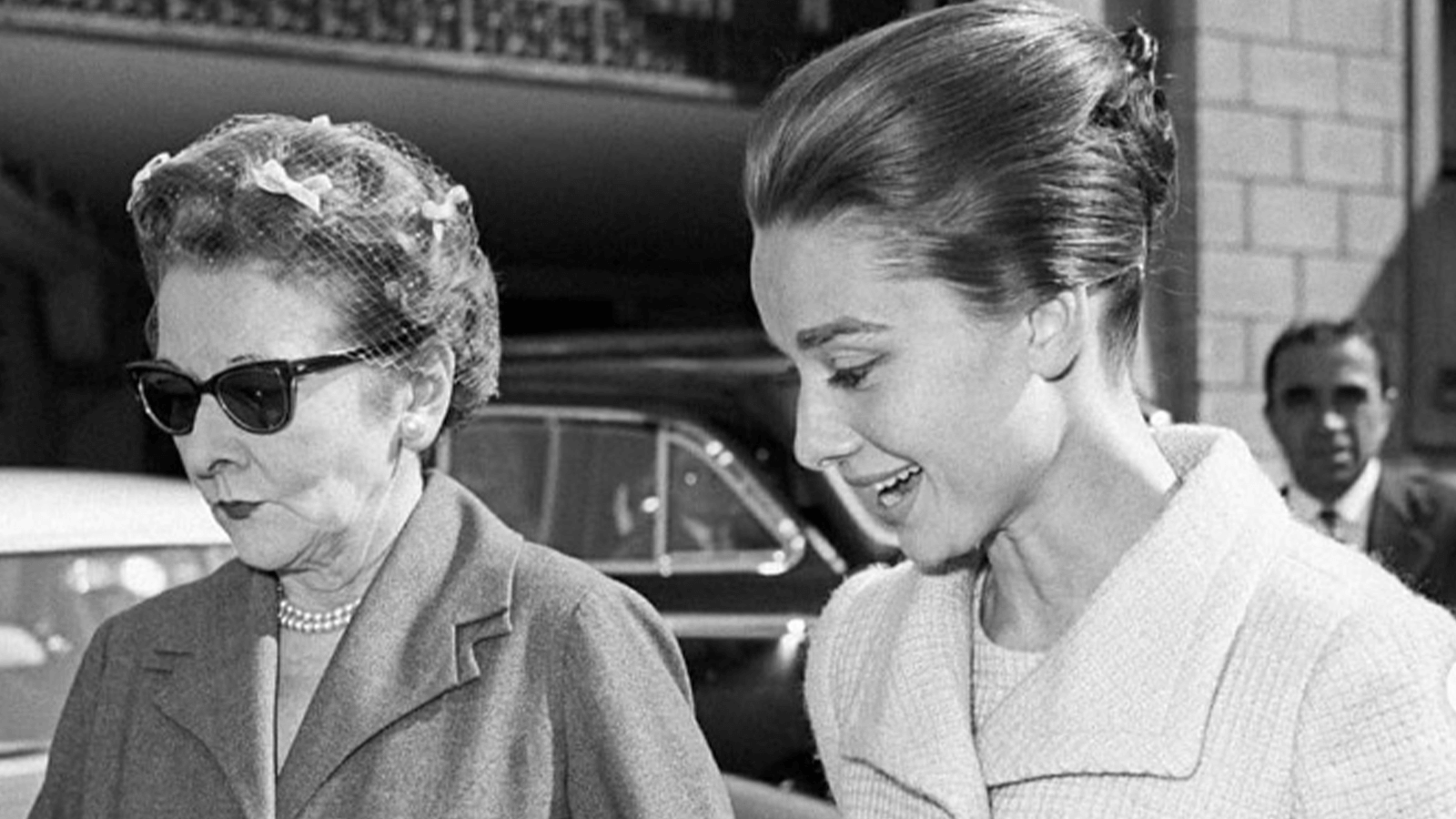
With her mother now left to raise Audrey and her siblings, she relocated the family to their estate in Arnhem and sent Hepburn’s half-brothers (Alex and Ian, 15 and 11 years old) to The Hague to reside with relatives.
One of her father’s demands included sending Audrey to England for her education, which in turn found her in Kent for the start of the 1935 term, at a small private school in Elham. She gained the nickname “Little Audrey” during this time.
It was here that she partook in her first known dramatic production, regaling the story of Humpty Dumpty with her fellow Brownie pack.
As the gentle nursery rhyme played out as the genesis point of her acting career, tensions boiled on the continent. War was coming, and it would change the course of her life.
A wartime hero
Following Winston Churchill’s radio broadcast declaring war on Germany (September 3, 1939), Hepburn’s mother scrambled to bring her daughter back to Arnhem. Hopes were high that the Netherlands would remain neutral and avoid German attack – as the country did during The Great War – yet fate had other ideas.
Although Holland pledged to stay neutral, the Nazis – led by Baroness Ella’s beloved Hitler – rolled across the country and instigated an array of atrocities that decimated the population. When the Nazis cut off food supplies, she almost starved to death alongside millions of other nationals.
Perhaps the envy of the world, Hepburn’s slender figure was a direct result of Nazi-enforced malnutrition during her adolescence. And nobody could be jealous of that.
Upon delving into the history books, it quickly becomes apparent that Hepburn did all she could to support the Resistance. Like so many Dutch children, she acted as a courier responsible for documents and delivering money to and from resistance workers.
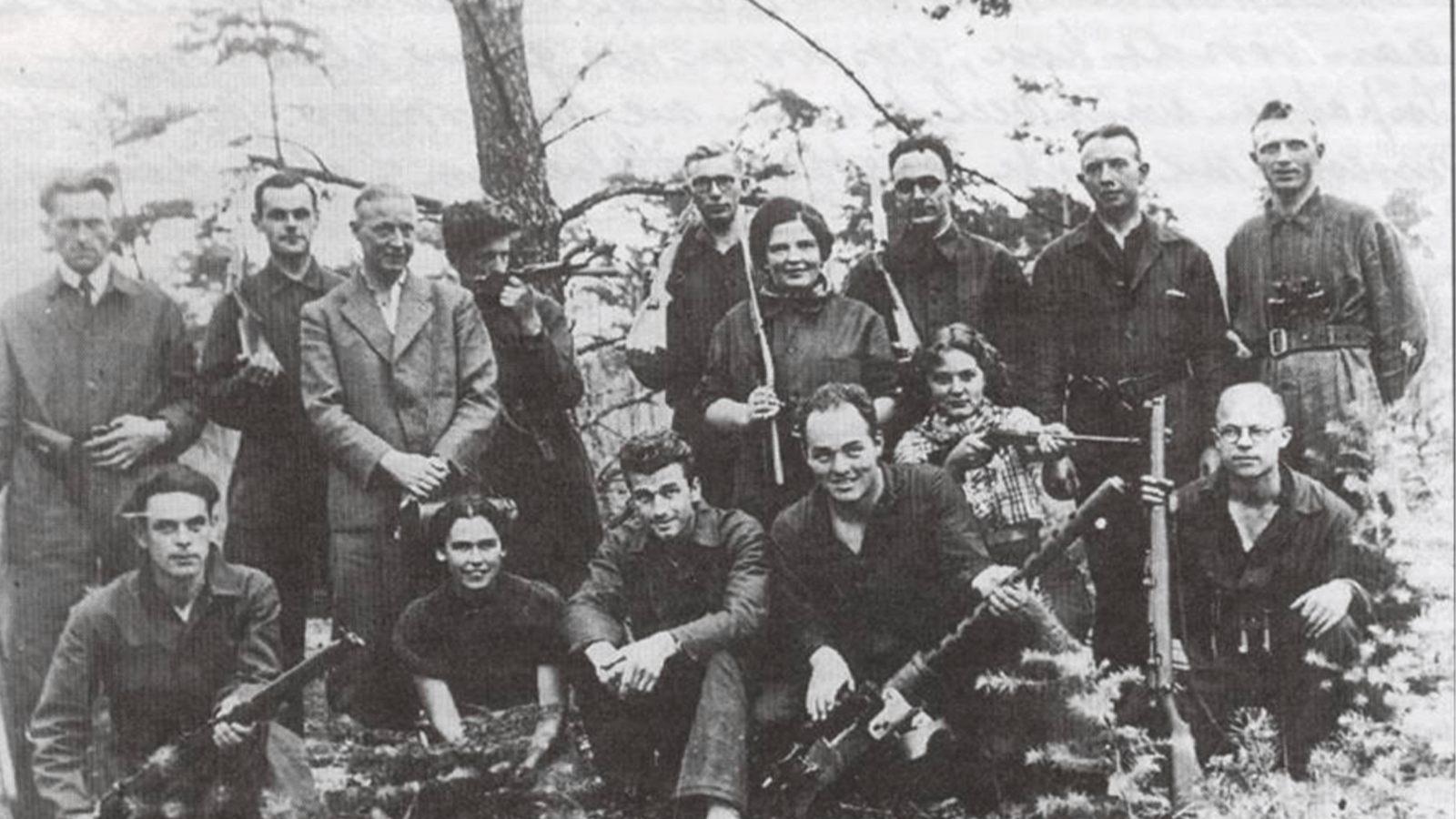
A student at the Arnhem Conservatory throughout the Second World War, Audrey would later recall performing ballet for audiences who weren’t permitted to clap or celebrate, to avoid the Nazis catching them. She donated any money she made from the performances to the Resistance, before volunteering as a nurse when she turned 16 years old.
During the battle of Arnhem, she tended to hundreds of wounded Allied soldiers, one of which was a young British paratrooper by the name of Terence Young.
This paratrooper would end up becoming a film director of epic proportions – bringing Sean Connery to the big screen as 007, and creating the James Bond franchise as we know it. He would direct Hepburn in Wait Until Dark, some 20 years later.
Throughout the Nazi occupation of Holland, Audrey had to change her name – as any form of English title would bring suspicion from Hitler’s rabid brigade of violence-hungry soldiers. Going by the name of Edda van Heemstra, both she and her family were profoundly affected by the German occupation.
“We thought it might be over next week”, she once said, “…six months…next year…that’s how we got through”.
Her wartime experiences remained with Hepburn until the end of her life. She had witnessed barbaric actions against the Jewish community, survived the Dutch famine of 1944-45, suffered at the hands of Hitler’s agenda and then – to top it all – the effects of malnutrition left her gravely ill with jaundice, oedema, anaemia and a fierce respiratory infection.
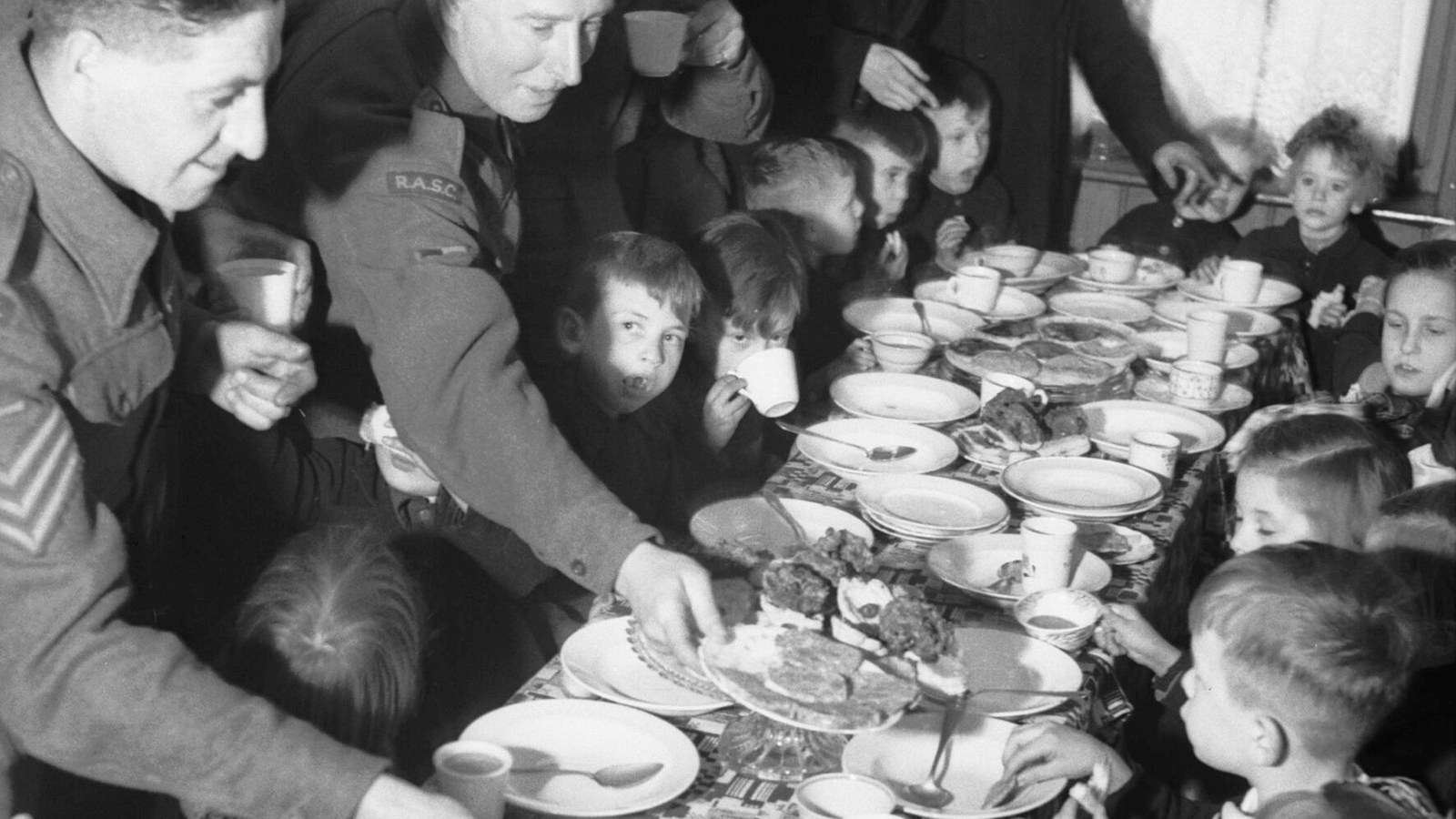
The only reason “Little Audrey” survived was because of a British Army Officer, and ex-lover of Baroness Ella. The Baroness wrote to the Officer and begged for help, after which he sent thousands of cigarettes that would sell on the black market. Sounds counterproductive, but the sales produced funds for the medicine that Audrey desperately required.
To add insult to injury, the Nazis destroyed almost everything that Hepburn’s family had. Their financial situation turned towards destitution, and many members of the family were executed or forced into German hard labour camps.
Naturally, Hollywood agents pushed Hepburn’s wartime heroics for publicity purposes, yet hid the concept that her parents had originally rooted for Hitler’s master race. If such news had ventured forth into the media, her squeaky-clean image would have been destroyed.
Yet, we believe that rejecting her parents’ racist ideology creates an even more admirable persona; one that 1950s Americana would have respected.
Stardom
Following the end of WWII, Hepburn moved to London where a ballet scholarship awaited and Audrey supported herself with part-time modelling work. Her mother took on menial jobs to provide further support.
A profession in ballet production wasn’t meant to be, and after her teacher expressed that Audrey’s height and ‘weak constitution’ would make her career unattainable, she instead turned to the theatre. Appearing as a chorus girl in various West End musicals – including High Button Shoes and Sauce Tartare – work was then secured as a dancer in a Soho nightclub.
Actor Felix Aylmer provided tuition for her trademark voice during this time, which caught the attention of Margaret Harper-Nelson, Ealing Studios casting director. Regular acting work began to trickle through, from BBC Television plays to supporting roles in British film productions. Her first major gig arrived in Thorold Dickinson’s Secret People (1952).
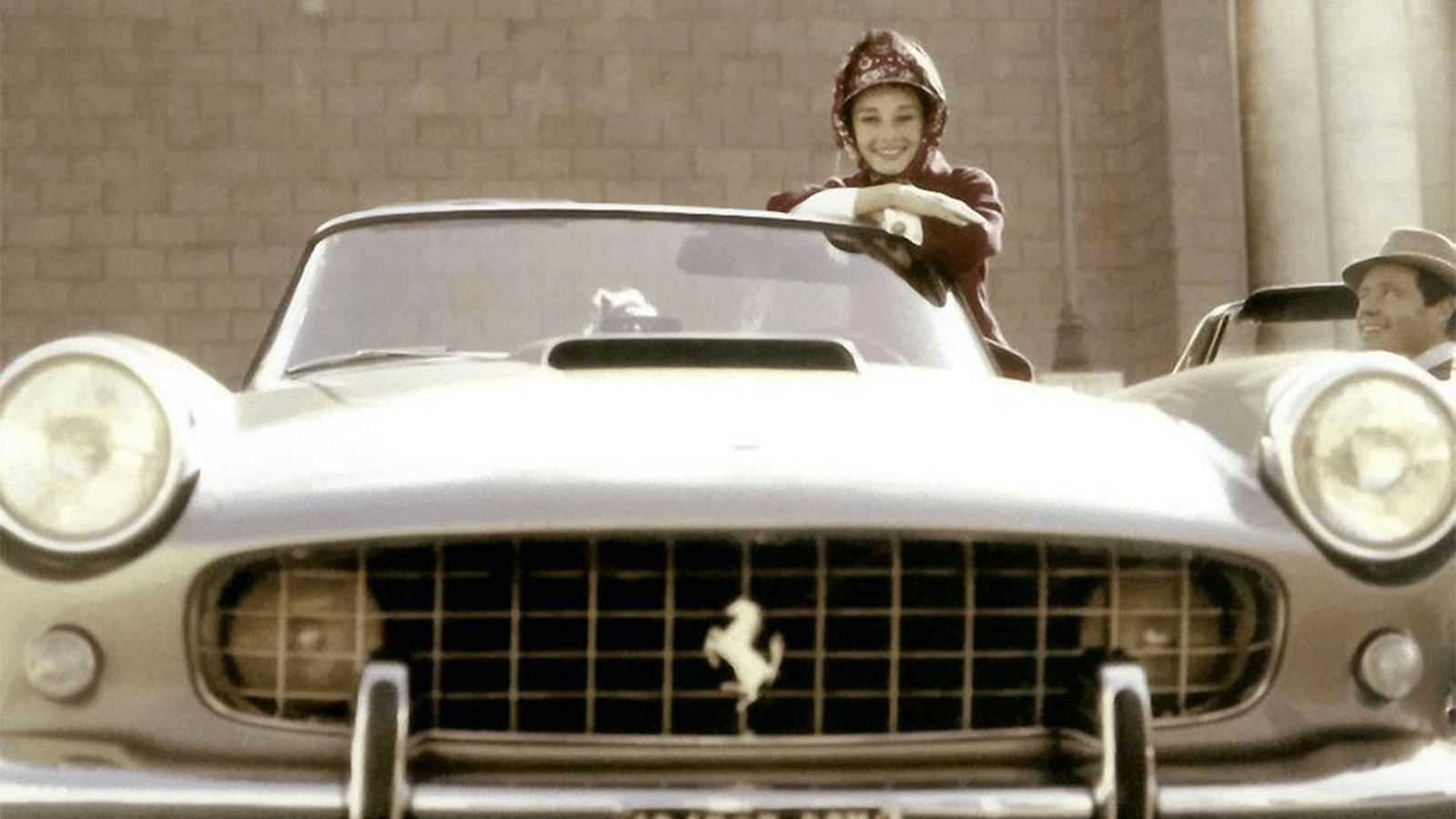
The first starring role involved the portrayal of Princess Ann – a European princess who escapes the rigid trough of formality to have a wild night with an American journalist (Gregory Peck) – in Roman Holiday (1953).
The producers had originally wanted the high-ranking Elizabeth Taylor for the lead role, but Hepburn’s screen test proved so impressive that a contract from Paramount promptly arrived through her agent.
Director William Wyler expressed: "She had everything I was looking for: charm, innocence, and talent. She also was very funny. She was absolutely enchanting, and we said, 'That's the girl!'"
Roman Holiday set the box office alight, generating serious levels of profit and gaining Hepburn critical acclaim. She won an Oscar for her performance, a BAFTA for Best British Actress, and a Golden Globe. Stardom was assured, and a string of culturally significant films cemented “Little Audrey” firmly in place as a phenomenon.
Paramount Pictures placed Hepburn on a seven-picture contract, with 12 months between projects to permit her beloved stage work. Time magazine showcased her eloquent features on the cover of the September 7, 1953, edition – then starring in Billy Wilder’s popular romantic comedy Sabrina.
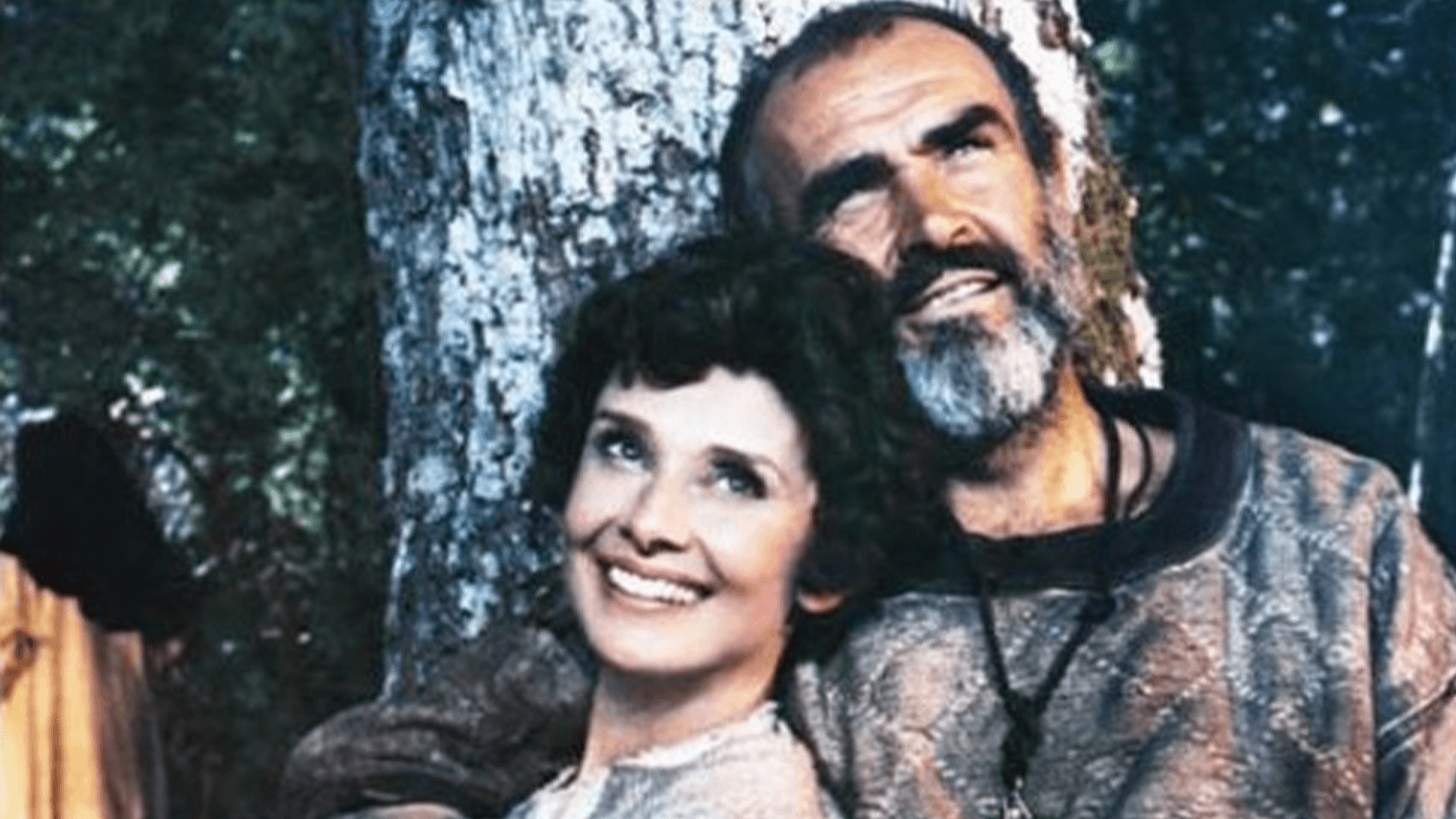
A diverse range of productions propelled her popularity into the stratosphere, tipped by the legendary 1961 motion picture Breakfast at Tiffany’s.
This was to be Hepburn’s defining role, even if Truman Capote - the author of the novella on which the film was based – disapproved of Audrey’s casting. He wanted Marilyn Monroe for the main role of Holly Golightly, then later admitted that Hepburn “did a terrific job”.
Now registered as one of the best-known characters in Western cinema, Holly Golightly’s ‘little black dress’ became an icon of the twentieth century. Another Academy Award nomination garnished an already impressive career.
And then – just to top it all off – she sang Happy Birthday to President John F Kennedy in a far more appropriate rendition following Marilyn Monroe’s dizzy-turn the previous year. Few people knew about Hepburn and JFK’s relationship prior to his marriage. Marilyn may have stolen the headlines, but Audrey had JFK’s deepest affections.
The ultimate humanitarian
Hepburn had semi-retired from acting by the turn of the 1970s, mainly to raise her family and offer help to charitable foundations. She was lured out from retirement by Sean Connery for the epic love story Robin & Marian (1976), then helping her old Paratrooper friend Terence Young with his production of Bloodline (1979), before one final appearance in Steven Spielberg’s largely forgotten yet heartwrenching Always (1989). Fittingly enough, she played an angel.
It was just prior to filming Always that Hepburn was appointed a Goodwill Ambassador of UNICEF. Proclaiming that she had been so grateful for international aid following the endurance of German occupation as a child in Holland, she was determined to show her gratitude and ensure children were protected.
Her first mission for UNICEF was a tough one. Visiting an Ethiopian orphanage in Mek’ele where 500 children were starving, she saw the cold hard reality of life away from Hollywood and had UNICEF deliver emergency provisions. The trip broke her heart, and left her feeling desperate to do more.
“I can't stand the idea that two million people are in imminent danger of starving to death, many of them children, [and] not because there isn't tons of food sitting in the northern port of Shoa. It can't be distributed.
Last spring, Red Cross and UNICEF workers were ordered out of the northern provinces because of two simultaneous civil wars... I went into rebel country and saw mothers and their children who had walked for ten days, even three weeks, looking for food, settling onto the desert floor into makeshift camps where they may die. Horrible.
That image is too much for me. The 'Third World' is a term I don't like very much, because we're all one world. I want people to know that the largest part of humanity is suffering.”
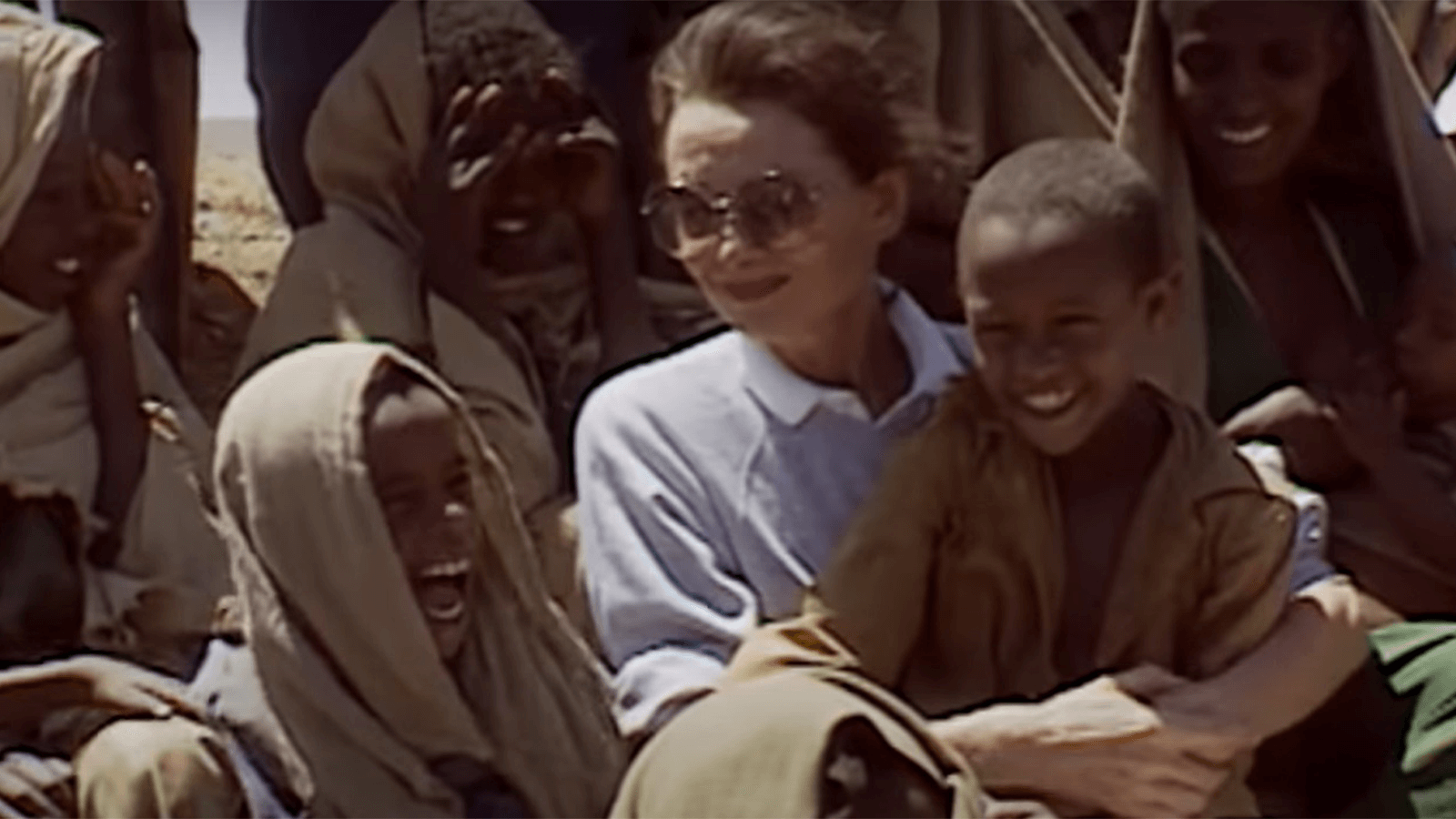
Hepburn followed that venture with a trip to Turkey on a ten-day immunisation campaign against disease, then heading to South America in a bid to construct schoolhouses and systems that brought clean water to the mountain communities, slums, and shantytowns.
Using her diplomatic charm and tact, she toured Central America in February 1989 to meet with political leaders and establish where UNICEF could assist. Then a huge challenge materialised – “Operation Lifeline”.
The Sudan civil war had cut off vital food deliveries from aid agencies to war torn areas, and Operation Lifeline found Audrey spearheading a mission to bring food into southern Sudan.
She may have been graceful and shy in public, but Hepburn had fire in the belly and determination in her heart when lifelines had to be generated.
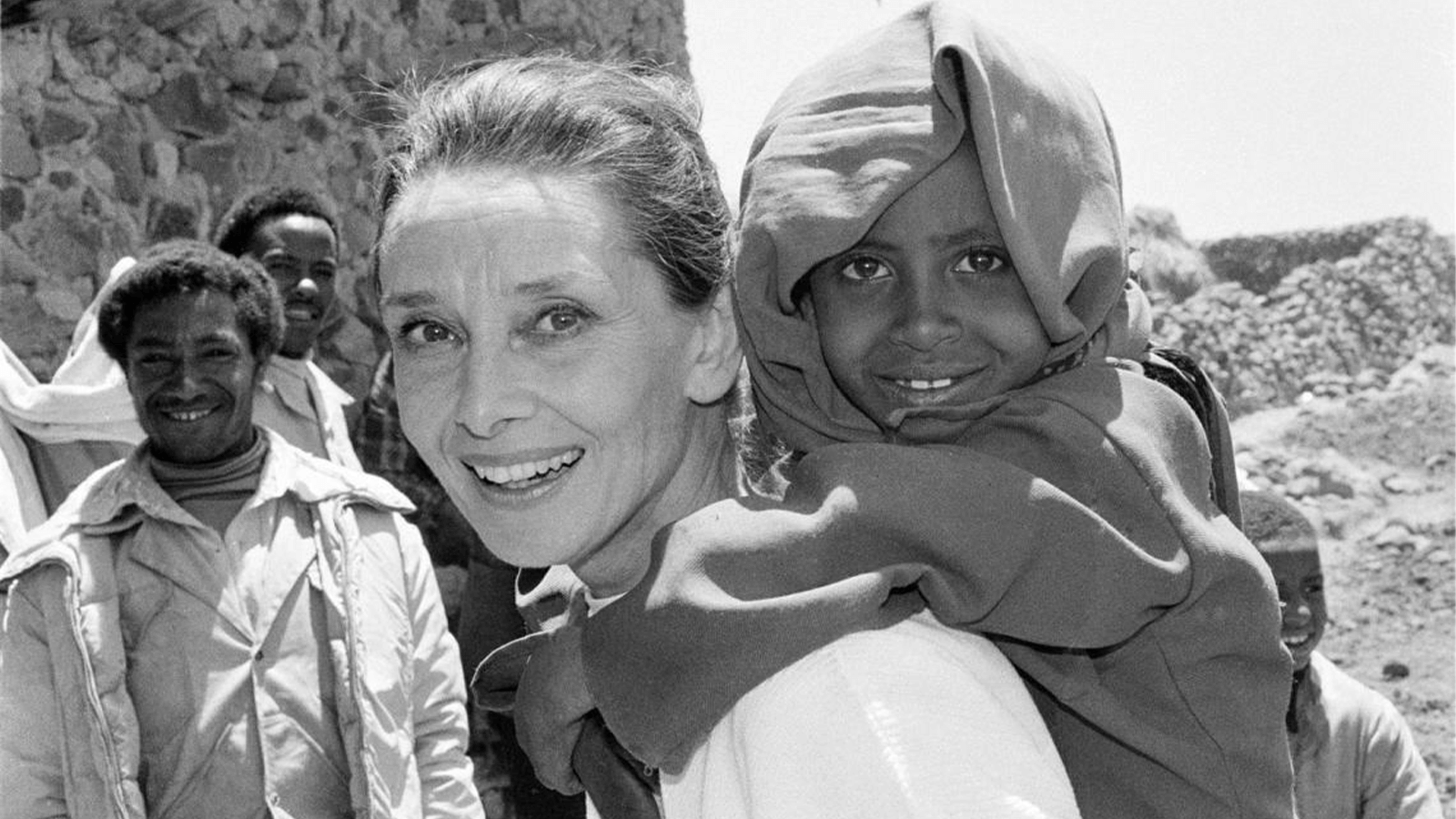
"I saw but one glaring truth: These are not natural disasters but man-made tragedies for which there is only one man-made solution – peace”, she said of the situation.
She didn’t undertake such actions to make headlines for vanity. A UN photographer said of her trip to Bangladesh:
"Often the kids would have flies all over them, but she would just go hug them. I had never seen that. Other people had a certain amount of hesitation, but she would just grab them. Children would just come up to hold her hand, touch her – she was like the Pied Piper."
Following an effort to collaborate with the Vietnamese government and engage with immunisation and clean water programmes, she reached out to another living legend in search of extra influence – ex-007 Roger Moore.
Moore was appointed as a UNICEF Goodwill Ambassador in 1991, and remained with them – a compelling voice for children’s rights and issues such as HIV/AIDS, landmine injuries and iodine deficiency – until his death in 2017.
Perhaps her most challenging mission came in September 1992. Four months before her death, Hepburn travelled to Somalia and promptly walked into a nightmare. She called it “apocalyptic”.
“I have seen famine in Ethiopia and Bangladesh, but I have seen nothing like this – so much worse than I could possibly have imagined. I wasn't prepared for this.”
Although scarred by what she had witnessed in Somalia, and suffering from cancer that left her in abject pain, Hepburn had hope that UNICEF would do everything possible to alleviate the suffering.
“As we move into the twenty-first century, there is much to reflect upon. We look around us and see that the promises of yesterday have to come to pass.
People still live in abject poverty, people are still hungry, people still struggle to survive. And among these people we see the children, always the children: their enlarged bellies, their sad eyes, their wise faces that show the suffering, all the suffering they have endured in their short years.”
A legacy beyond Hollywood
Known to those of a cinematic persuasion as an EGOT – a winner of an Emmy, a Grammy, an Oscar and a Tony Award – Hepburn’s legacy is, arguably, more prominent and impressive outside of Hollywood.
The then-President of the United States, George H.W Bush, presented “Little Audrey” with the Presidential Medal of Freedom in recognition of her UNICEF work. She was also – posthumously – awarded the Jean Hersholt Humanitarian Award for her contribution to humanity.
Back in 2002, UNICEF honoured Hepburn’s legacy by unveiling a statue – “The Spirit of Audrey” – at their New York HQ. Then there’s the United States Fund for UNICEF’s Audrey Hepburn Society. Not to mention all the volunteers inspired by her actions.
Cancer may have taken the humanitarian across the rainbow bridge nearly thirty years ago, but her mantra still influences charity work and provides a baseline for what’s right. Audrey is gone, but her spirit remains.
Sadly, the same cannot be said for her cruise ship.
Star Princess: long gone
Star Princess had originally been launched and named as Sitmar FaitMajesty, but the ship never hosted a paying customer under that guise.
Sitmar was taken over by P&O in 1988, and as P&O subsequently renamed the vessel, they decided to break with tradition and opt for Hollywood royalty to christen Star Princess as Godmother.
Except, rather than plumping for an egotistical star of the silver screen, P&O bigwigs wanted someone with class and dignity – someone who also had compassion in her soul; Audrey Hepburn.
Following the ship’s maiden voyage to the Caribbean, the ship had an eventful history. She collided with a rock on June 23, 1995, and suffered $20 million worth of damage - luckily, nobody was injured.
After the repair work, the ship left North American inventories to find a base in Southampton as the Arcadia, replacing the iconic SS Canberra, until the Ocean Village sub-brand claimed the Star Princess for a revamp.
Sailing under a new name – Ocean Village – the final voyage with P&O (now in its’ Australian division) took place in 2016. The ship was handed across to Cruise & Maritime Voyages (CMV), but due to the COVID pandemic, CMV went into administration.
The ship was auctioned off and purchased by Greek operator SeaJets.
Yet, because of age-related wear, the cruise liner was condemned and beached in Alang, India for scrap. The tear-down process began on August 5, 2022.